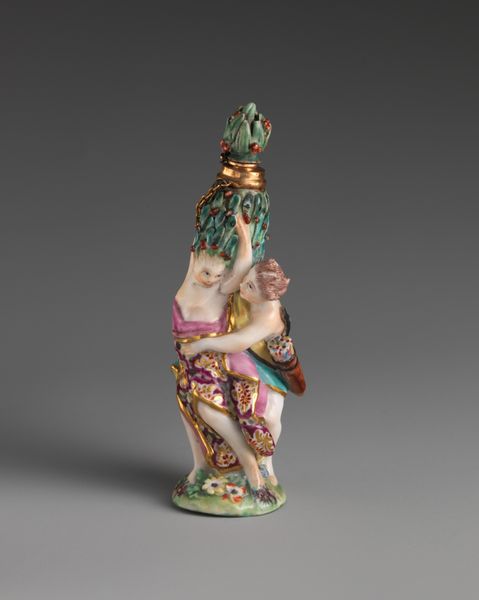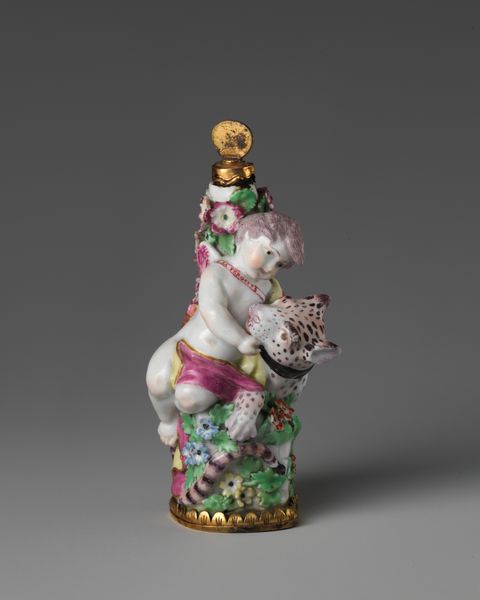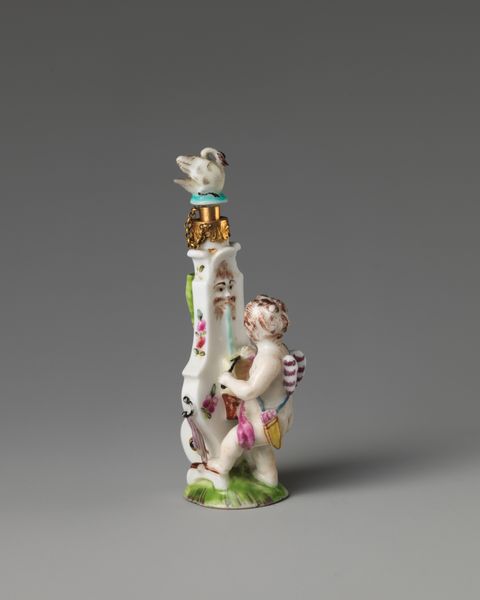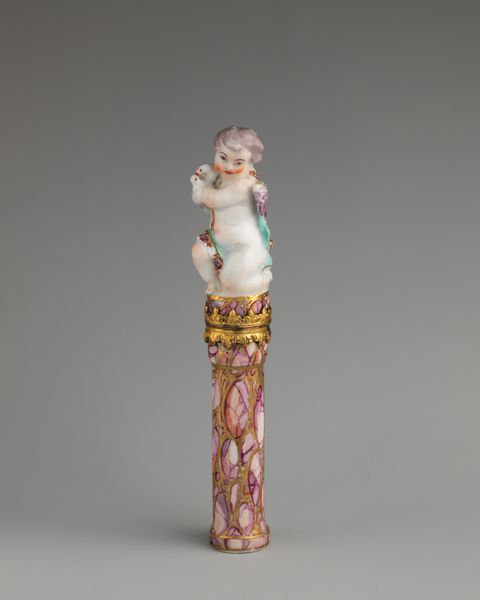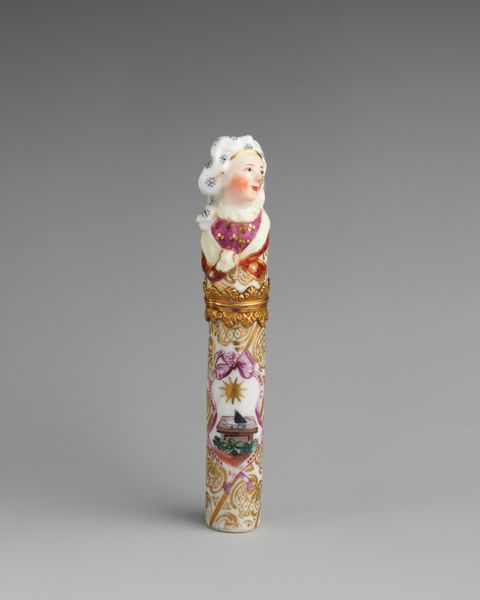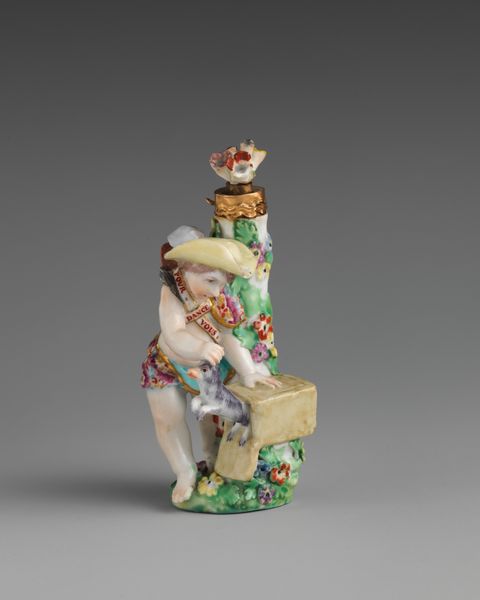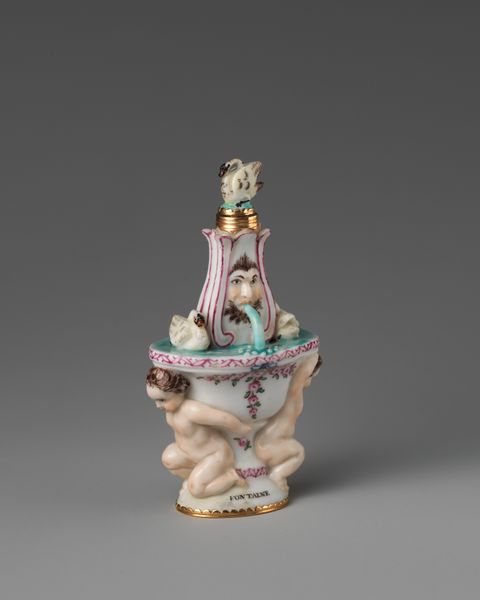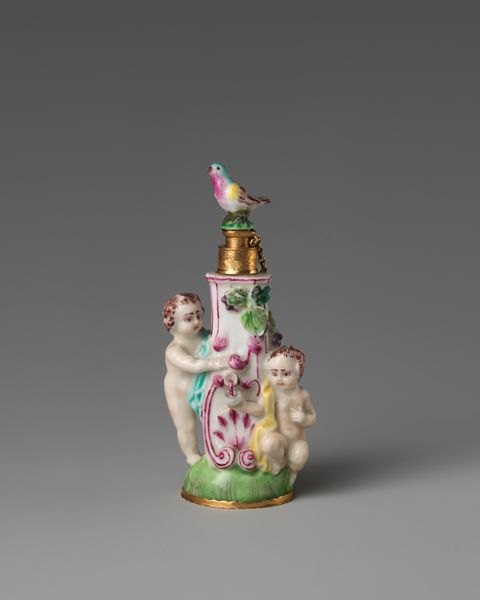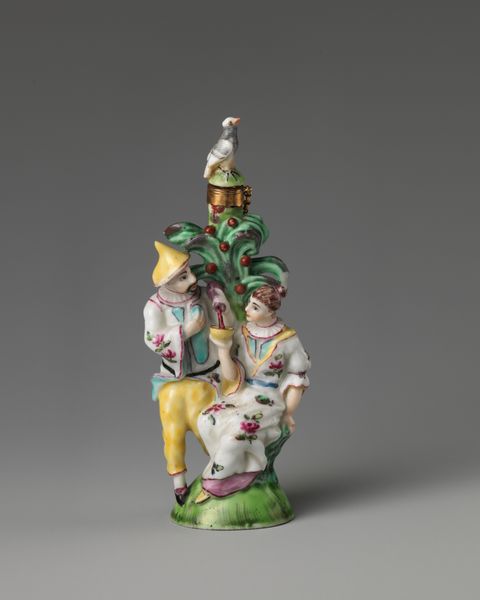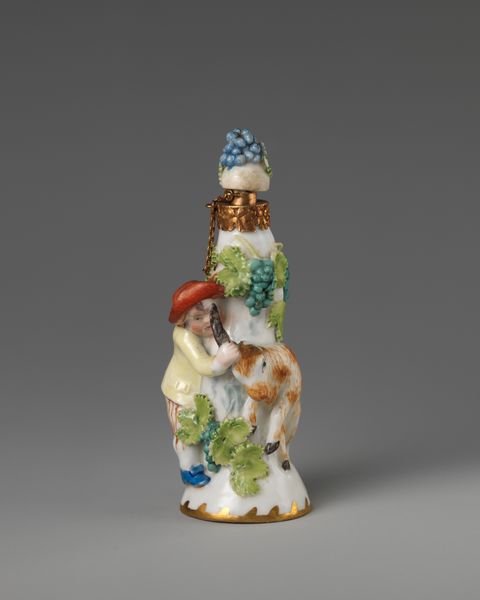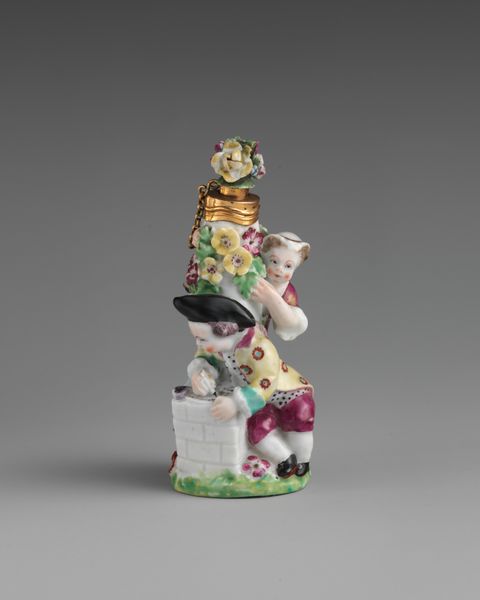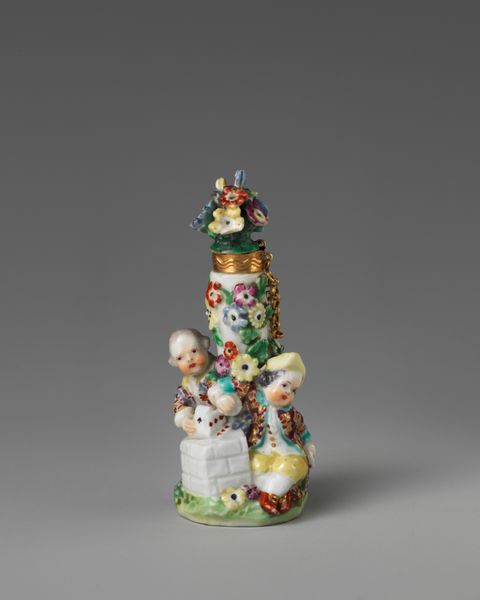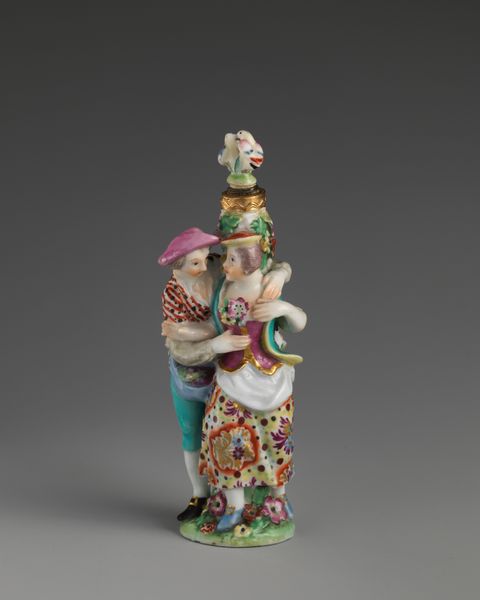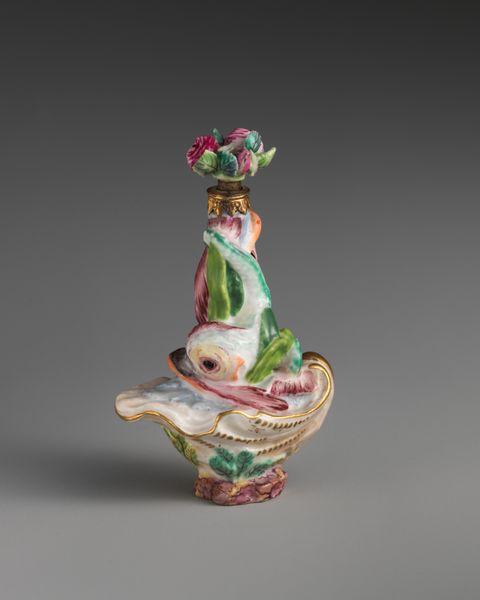
ceramic, porcelain, sculpture
#
3d sculpting
#
3d model
#
girl
#
child design
#
ceramic
#
jewelry design
#
flower
#
porcelain
#
3d character model
#
curved letter used
#
sculpture
#
child character design
#
3d modeling
#
character design for animation
#
decorative-art
#
3d character modeling
Dimensions: 5 1/4 × 1 1/4 in. (13.3 × 3.2 cm)
Copyright: Public Domain
Curator: This porcelain sculpture, dating from 1745 to 1760, is titled "Three children in a group," made by Saint James's Factory and currently residing at The Metropolitan Museum of Art. What strikes you first about it? Editor: It's exquisitely delicate, almost fragile in appearance. The colour palette is restrained, emphasizing the fine details of the forms. It projects this sort of quiet, classical mood. Curator: Indeed. When looking closely at "Three children in a group", we see the craftsmanship really stands out. The use of porcelain, especially from Saint James's Factory, meant this would have been part of the increasing culture of conspicuous consumption during that era, intended for display in a bourgeois household. Editor: The formal structure seems very important here. Notice how the column-like base leads up to these meticulously rendered children. Above that are those flourishes, an almost excessive floral adornment. The relationship of forms here certainly provides much interest for analysis. Curator: I’m also drawn to considering the division of labor involved. Porcelain production was hardly a solitary endeavor, the processes of molding, firing, and painting meant entire workshops devoted to these luxurious objects. Editor: Do you think it intentionally resembles classical architectural components? Because that fluted body and the capital with those delicate flowers are, in my opinion, directly trying to remind the viewer of some important civic virtue, expressed through form and material. Curator: Perhaps, but let's consider how such a design normalizes ideas about childhood. A porcelain that displays children that were idealized—presumably as cherubs, rather than considering child labor as a common aspect of eighteenth-century British society, creates a distorted narrative that romanticizes specific values about work and class. Editor: Regardless, seeing this piece reminds us about the beauty found in formal articulation of porcelain art during this period. Curator: It definitely reminds me to reflect on all those processes involved in its creation!
Comments
No comments
Be the first to comment and join the conversation on the ultimate creative platform.
